Ditapis dengan
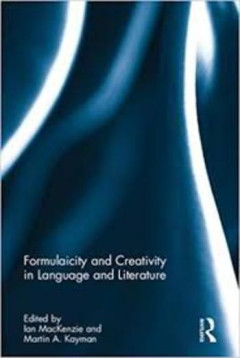
Formulaicity and creativity in language and literature
Formulaicity is pervasive in both spoken and written language. Speakers use a huge amount of prefabricated language including collocations, idioms, fixed and semi-fixed expressions, and verbal creativity often involves combining established word sequences rather than inventing wholly new ones. In literature, formulaicity was long disparaged as the opposite of creativity, and a hallmark of ‘ge…
- Edisi
- -
- ISBN/ISSN
- -
- Deskripsi Fisik
- 126 p.; 22 cm.
- Judul Seri
- -
- No. Panggil
- 807 FOR f
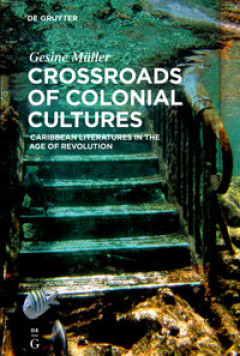
Crossroads of Colonial Cultures :Caribbean Literatures in the Age of Revolution
The examination of literary and cultural transfer processes in the colonial Caribbean allows completely new insights into the early processes of cultural globalisation. Racist discourses, established models of white abolitionists, politics of remembrance and the hitherto neglected role of the Haitian Revolution combine to an amalgam that questions our established concept of a genuine western mo…
- Edisi
- -
- ISBN/ISSN
- 9783110495416
- Deskripsi Fisik
- VIII, 359 p.
- Judul Seri
- -
- No. Panggil
- 840.99729 MUL c
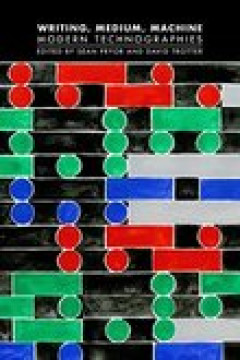
Writing, Medium, Machine:Modern Technographies
Writing, Medium, Machine: Modern Technographies is a collection of thirteen essays by leading scholars which explores the mutual determination of forms of writing and forms of technology in modern literature. The essays unfold from a variety of historical and theoretical perspectives the proposition that literature is not less but more mechanical than other forms of writing: a transfigurative i…
- Edisi
- -
- ISBN/ISSN
- 9781785420184
- Deskripsi Fisik
- 223 p.
- Judul Seri
- -
- No. Panggil
- 809.933558 TRO w

History and cultural memory in neo-Victorian fiction:Victorian afterimages
History and Cultural Memory in Neo-Victorian Fiction combines innovative literary and historiographical analysis to investigate the way neo-Victorian novels conceptualise our relationship to the Victorian past, and to analyse their role in the production and communication of historical knowledge. Positioning neo-Victorian novels as dynamic participants in the contemporary historical imaginary, …
- Edisi
- -
- ISBN/ISSN
- 978023022858
- Deskripsi Fisik
- ix, 222 p. ; 23 cm.
- Judul Seri
- -
- No. Panggil
- 823.809358 MIT h
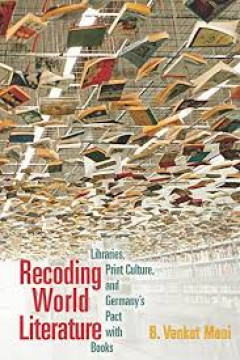
Recoding world literature:libraries, print culture, and Germany's pact with b…
From the current vantage point of the transformation of books and libraries, B. Venkat Mani presents a historical account of world literature. By locating translation, publication, and circulation along routes of “bibliomigrancy,” Mani narrates how world literature is coded and recoded as literary works find new homes on faraway bookshelves. Mani argues that the proliferation of world liter…
- Edisi
- -
- ISBN/ISSN
- 9780823273409(hardcover)
- Deskripsi Fisik
- 348 pages : illustrations, maps ; 23 cm
- Judul Seri
- -
- No. Panggil
- 809.3 MAN r
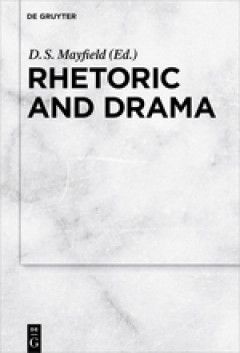
Rhetoric and drama
Proving fruitful in various applications throughout its two millennia of predominance, the rhetorical téchne appears to have entertained a particularly symbiotic interrelation with drama. With contributions from (among others) a Classicist, historical, linguistic, musicological, operatic, cultural and literary studies perspective, this publication offers interdisciplinary assessments of specif…
- Edisi
- -
- ISBN/ISSN
- 9783110484663
- Deskripsi Fisik
- X, 244 p.
- Judul Seri
- -
- No. Panggil
- 808 MAY r
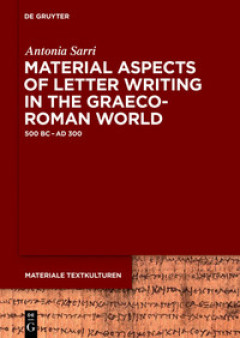
Material aspects of letter writing in the Graeco-Roman world, 500 BC-AD 300
Letter writing was widespread in the Graeco-Roman world, as indicated by the large number of surviving letters and their extensive coverage of all social categories. Despite a large amount of work that has been done on the topic of ancient epistolography, material and formatting conventions have remained underexplored, mainly due to the difficulty of accessing images of letters in the past. Tha…
- Edisi
- -
- ISBN/ISSN
- 9783110426953
- Deskripsi Fisik
- viii, 388 p.
- Judul Seri
- -
- No. Panggil
- 886.0109 SAR m

Story and emotion :a study in affective narratology
Per Thomas Andersen analyzes literary works by Kierkegaard, Dostoyevsky, Ibsen, Hamsun, J.P. Jacobsen, Schoenberg and Knausgaard. Based on perspectives from literary studies, philosophy, cognitive psychology, neurobiology and media studies, professor Andersen analyzes characters in the novels, temporal and spatial aspects of the narratives, sources of emotional impulses, and different ways in w…
- Edisi
- -
- ISBN/ISSN
- 9788215028255
- Deskripsi Fisik
- 186 p.; 22 cm.
- Judul Seri
- -
- No. Panggil
- 808.8 AND s
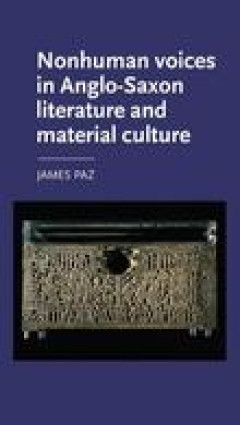
Nonhuman voices in Anglo-Saxon literature and material culture
"Anglo-Saxon ‘things’ could talk. Nonhuman voices leap out from the Exeter Book Riddles, telling us how they were made or how they behave. The Franks Casket is a box of bone that alludes to its former fate as a whale that swam aground onto the shingle, and the Ruthwell monument is a stone column that speaks as if it were living wood, or a wounded body. In this book, James Paz uncovers the v…
- Edisi
- -
- ISBN/ISSN
- 9781526115997
- Deskripsi Fisik
- X, 236 p.
- Judul Seri
- -
- No. Panggil
- 829.09 PAZ n

Thinking media aesthetics :media studies, film studiesand the arts
Thinking Media Aesthetics investigates the field between media studies and the aesthetic disciplines. It presents an interdisciplinary program for aesthetic analysis and theoretical reflection. It stages a conversation around basic concepts in the field, like «medium» and «media», and about how we might best go about studying these terms.
- Edisi
- -
- ISBN/ISSN
- 9783631642979
- Deskripsi Fisik
- -
- Judul Seri
- -
- No. Panggil
- 801.93 THI t

Sisters and the English household :domesticity and women's autonomy in ninete…
All books have long histories. The ideas and early versions of this book stretch back to my doctoral work at the University of Texas at Austin, to Kurt Heinzelman’s scholarship on William and Dorothy Wordsworth, and to Richard Sha’s unfailing friendship and encouragement through the years since we were students together. Librarians at t…
- Edisi
- -
- ISBN/ISSN
- 9781783088454
- Deskripsi Fisik
- 216p
- Judul Seri
- -
- No. Panggil
- 820.9352652 ANN s
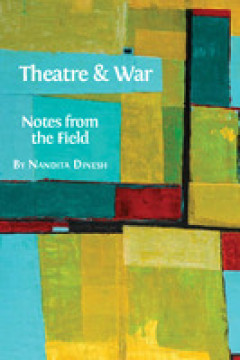
Theatre and war :notes from the field
"Nandita Dinesh places Kipling’s ""six honest serving-men"" (who, what, when, where, why, how) in productive conversation with her own experiences in conflict zones across the world to offer a theoretical and practical reflection on making theatre in times of war. This timely and important book weaves together Dinesh’s personal narrative with the public story of modern conflict, illustratin…
- Edisi
- -
- ISBN/ISSN
- 9781783742585
- Deskripsi Fisik
- 210 p
- Judul Seri
- -
- No. Panggil
- 809.293581 DIN t
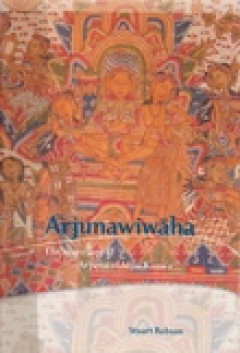
Arjunawiwāha :the marriage of Arjuna of Mpu Kaṇwa
The Arjunawiwāha is one of the best known of the Old Javanese classics. This volume presents a new text, based on Balinese manuscripts, with a complete translation, building on the work done by earlier writers. An introduction provides ample background information, as well as an original interpretation of the significance of the text, within its historical and cultural setting. This poem was w…
- Edisi
- -
- ISBN/ISSN
- 9789067183215
- Deskripsi Fisik
- III, 208
- Judul Seri
- -
- No. Panggil
- 899.222 ROB a

Sisters and the English household :domesticity and women's autonomy in ninete…
All books have long histories. The ideas and early versions of this book stretch back to my doctoral work at the University of Texas at Austin, to Kurt Heinzelman’s scholarship on William and Dorothy Wordsworth, and to Richard Sha’s unfailing friendship and encouragement through the years since we were students together. Librarians at t…
- Edisi
- -
- ISBN/ISSN
- 9781783088454
- Deskripsi Fisik
- 216p
- Judul Seri
- -
- No. Panggil
- 820.9352652 ANN s

Theatre and war :notes from the field
"Nandita Dinesh places Kipling’s ""six honest serving-men"" (who, what, when, where, why, how) in productive conversation with her own experiences in conflict zones across the world to offer a theoretical and practical reflection on making theatre in times of war. This timely and important book weaves together Dinesh’s personal narrative with the public story of modern conflict, illustratin…
- Edisi
- -
- ISBN/ISSN
- 9781783742585
- Deskripsi Fisik
- 210 p
- Judul Seri
- -
- No. Panggil
- 809.293581 DIN t

The ideologies of lived space in literary texts, ancient and modern
In a brief essay called Des espaces autres (1984) Michel Foucault announced that after the nineteenth century, which was dominated by a historical outlook, the current century might rather be the century of space. His prophecy has been fulfilled: the end of the twentieth century witnessed a ‘spatial turn’ in humanities which was perhaps partly due to the globalisation of our modern world. I…
- Edisi
- -
- ISBN/ISSN
- 9789038221021
- Deskripsi Fisik
- 256 p.
- Judul Seri
- -
- No. Panggil
- 800 KLO i
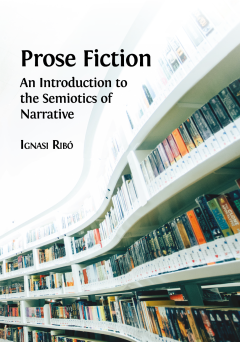
Prose fiction:an introduction to the semiotics of narrative
- Edisi
- -
- ISBN/ISSN
- 9781783748112
- Deskripsi Fisik
- 335 p.
- Judul Seri
- -
- No. Panggil
- 808 RIB p
- Edisi
- -
- ISBN/ISSN
- 9781783748112
- Deskripsi Fisik
- 335 p.
- Judul Seri
- -
- No. Panggil
- 808 RIB p
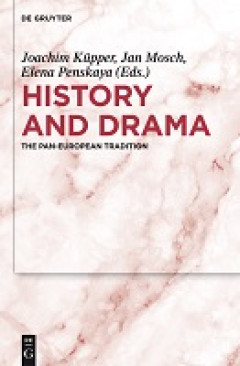
History and drama:the Pan-European tradition
Aristotle’s neat compartmentalization notwithstanding (Poetics, ch. 9), historians and playwrights have both been laying claim to representations of the past – arguably since Antiquity, but certainly since the Renaissance. At a time when narratology challenges historiographers to differentiate their “emplotments” (White) from literary inventions, this thirteen-essay collection takes a f…
- Edisi
- -
- ISBN/ISSN
- 9783110604276
- Deskripsi Fisik
- viii, 202p.: ill. ; 24 cm
- Judul Seri
- -
- No. Panggil
- 809.2 HIS h
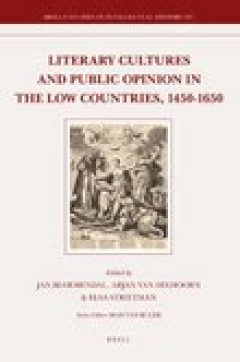
Literary cultures and public opinion in the Low Countries, 1450-1650
In the early modern Low Countries, literary culture functioned on several levels simultaneously: it provided learning, pleasure, and entertainment while also shaping public debate. From a ditty in Dutch sung in the streets to a funeral poem in Latin composed to be read for or by intimate friends, from a play performed for a prince to a comedy written for pupils – literary texts and performanc…
- Edisi
- -
- ISBN/ISSN
- 9789004206168
- Deskripsi Fisik
- x, 324 p.
- Judul Seri
- -
- No. Panggil
- 839.109002 BLO l

Poetics and politics
Far from teleological historiography, the pan-European perspective on Early Modern drama offered in this volume provides answers to why, how, where and when the given phenomena of theatre appear in history. Using theories of circulation and other concepts of exchange, transfer and movement, the authors analyze the development and differentiation of European secular and religious drama, within t…
- Edisi
- -
- ISBN/ISSN
- 9783110536690
- Deskripsi Fisik
- 280 p.; 22 cm.
- Judul Seri
- -
- No. Panggil
- 822 POE p
 Karya Umum
Karya Umum  Filsafat
Filsafat  Agama
Agama  Ilmu-ilmu Sosial
Ilmu-ilmu Sosial  Bahasa
Bahasa  Ilmu-ilmu Murni
Ilmu-ilmu Murni  Ilmu-ilmu Terapan
Ilmu-ilmu Terapan  Kesenian, Hiburan, dan Olahraga
Kesenian, Hiburan, dan Olahraga  Kesusastraan
Kesusastraan  Geografi dan Sejarah
Geografi dan Sejarah